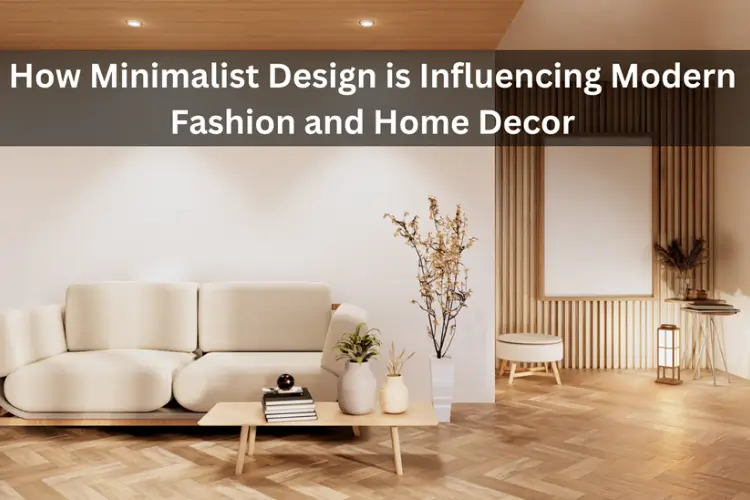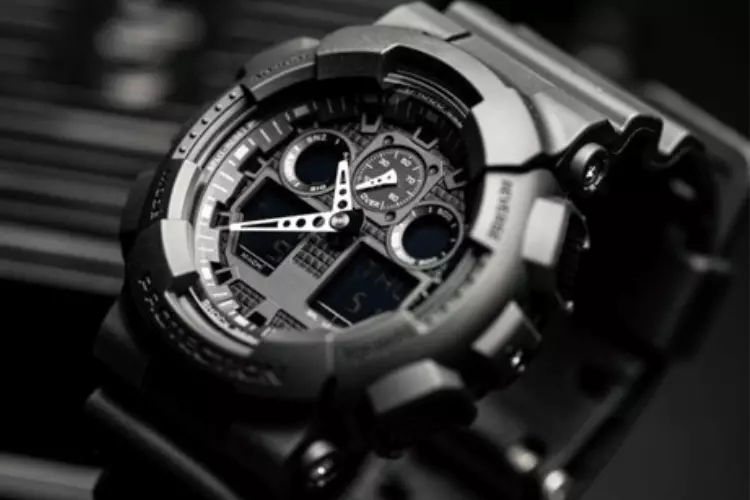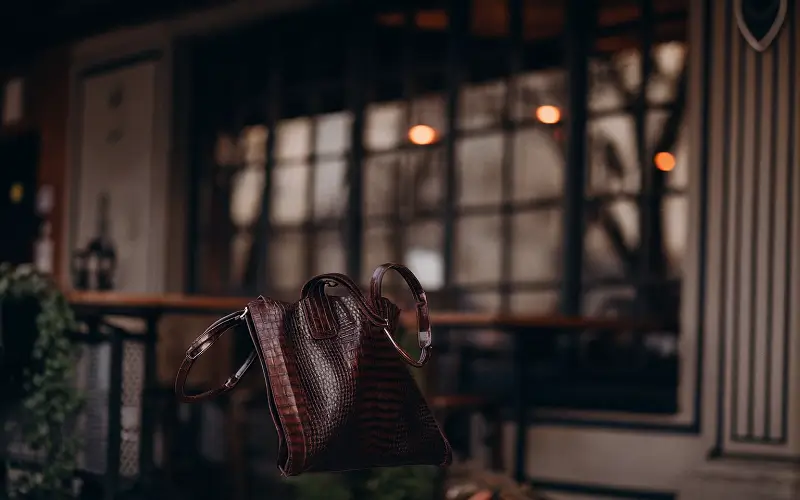What makes minimalism so captivating in fashion and home decor? Rooted in the belief that “less is more,” minimalist design emphasizes simplicity, functionality, and timeless elegance. As trends evolve, many are embracing a streamlined, intentional lifestyle that values quality over excess.
But minimalism isn’t just about owning fewer things it’s about choosing pieces that truly add value. From curated wardrobes to thoughtfully designed interiors, this movement strikes a perfect balance between style and practicality, making its influence stronger than ever.
Minimalist Influences in Home Decor
Minimalist home decor follows the same philosophy as fashion by embracing simplicity, functionality, and intentional design. Spaces are designed to feel open, uncluttered, and calming, allowing for a sense of ease and balance. The focus is on quality over quantity, ensuring that each piece serves a purpose.
Core Principles of Minimalist Interior Design
Minimalist interiors are characterized by neutral and earthy tones, clean lines, and well-chosen furniture. White, beige, gray, and soft pastels create a light, airy feel that makes spaces look more open and inviting. The goal is to create an environment that is both practical and visually soothing.
Furniture in minimalist interiors is often sleek and multifunctional, designed to maximize space without overwhelming the room. A well-chosen modular sectional sofa enhances both style and functionality, offering a versatile seating solution while maintaining a clean, uncluttered look. Decorative elements are kept to a minimum, with an emphasis on thoughtfully placed pieces that add warmth and character without excess.
Popular Minimalist Decor Styles
Scandinavian and Japandi styles are among the most popular forms of minimalist interior design. Scandinavian minimalism blends clean aesthetics with cozy elements, using soft textures and light wood to create a sense of warmth. Japandi, a mix of Japanese and Scandinavian design, balances simplicity with natural materials to create a peaceful and harmonious space.
These styles highlight the beauty of understated decor and intentional choices. Whether it’s warm, inviting textures or carefully curated furniture, they help create spaces that feel both modern and comfortable. Minimalist interiors encourage a sense of order and relaxation, making everyday living more enjoyable.
Incorporating Minimalism into Various Living Spaces
Minimalism can be applied to different areas of the home. In the living room, simple seating arrangements, natural lighting, and a few carefully selected decor pieces create a sense of openness. In the bedroom, neutral bedding and uncluttered surfaces contribute to a peaceful atmosphere.
In the kitchen, clean countertops, sleek storage solutions, and well-organized essentials enhance functionality. By keeping spaces simple and intentional, minimalist interiors bring a sense of calm and balance to everyday life.
Minimalism in Modern Fashion
Clean lines, muted colors, and excellent fabrics are characteristics of minimalist fashion. Unlike rapidly changing trends, minimalist clothing is built to last. A closet consisting of wardrobe staples that fit within a particular classic, timeless mold makes getting dressed easy, while still achieving a polished appearance.
Neutral colors such as black, white, beige, and gray are popular in minimalist fashion because they go well with everything. The silhouettes are structured but simple, using quality fabrics to create a sophisticated look. In minimalist fashion, subtle details and textures are used instead of loud patterns or over-embellishments.
Leading Brands Embracing Minimalist Aesthetics
Many brands embraced a clean and structured design to epitomize minimalist principles: focusing on neutral tones, functional silhouettes, and thoughtful craftsmanship. Thus, minimalist fashion remains a highly trendy choice among the masses in trying to de-complicate wardrobes yet achieve elegance.
Minimalist fashion also answers the ethical and responsible use of production. Most producers who own the minimalist fashion brand use high-quality goods that can last for a long time. Using such essential goods in the long term encourages consumers to move from disposable fashion to meaningful dressing.
The Intersection of Minimalism and Sustainability in Fashion
Minimalism inspires people to select their wardrobes more mindfully. A minimal wardrobe will have fewer items that can be worn in multiple ways, thus eliminating rush shopping. Rush shopping is eliminated because shopping for durable and well-made clothes contributes to a stylish closet over time.
A well-curated wardrobe is practicality combined with easy dressing. Picking out mix-and-match-ready clothing that’s season-friendly makes fashion easy and refined. Minimalism is not about restriction but about choosing pieces that matter.
The Psychological Appeal of Minimalist Design
Benefits of Minimalism on Mental Well-being
Minimalism brings clarity and order by establishing space away from distractions. A tidy room is more acceptable than a disorganized room, thereby enhancing one’s full concentration during relaxation time. Decluttering environments have been found to reduce stress by many.
By selecting careful, straightforward items, minimalism practices mindfulness in daily life. This leads to a far greater appreciation of all the things that really matter in a calm and nicely balanced life.
Functional Advantages of Minimalist Spaces
Minimalism preaches practicality and efficiency in a design approach. Spaces designed will require less maintenance and ease the comfort of daily routines. Minimalist wardrobes offer a simplified decision-making process that eases other morning routines.
Minimalism engenders a home and lifestyle that is both purposeful and fulfilling by active prioritizing of high-quality essential goods. The focus is on choosing what truly adds value while eliminating what doesn’t.
Future Trends: The Evolution of Minimalist Design
Emerging Trends in Minimalist Fashion
Minimalist fashion continues to take on versatile, functional designs. Many brands are crafting garments that would fit diverse occasions, which would make dressing so much more convenient. Gender-neutral styles and sustainable fashion materials are becoming more common, reinforcing the idea that fashion can be both simple and functional.
The concept of capsule wardrobes continues to grow, emphasizing timeless essentials that can be mixed and matched. This shift allows people to express their style while maintaining a streamlined, intentional wardrobe.
Innovations in Minimalist Home Decor
Minimalist home decor has included new materials and smart design ideas. Many consumers choose practical yet beautiful furniture to engage form and function. There is also increasing acceptance for designing that emphasizes natural elements and calming colors.
Technology also plays a role in minimalism, where smart home features blend seamlessly with modern decor. The future of minimalist design might focus on simplifying, efficiency, and thoughtful craftsmanship.
Conclusion
Minimalism is not just a fashion statement; it is a lifestyle that welcomes simplicity and intention. It comes in fashion or home decor, encouraging people to balance and favor quality over excess or quantity.
By practicing minimalism, one can enhance life, diminish distractions, and create environments that incorporate and reflect individual values. Minimalism continues to shape modern aesthetics, proving that simplicity will always be timeless.
FAQs
What is the purpose of minimalist design?
Minimalist design strives to maintain simplicity, purposefulness, and discernment by purging the unnecessary to create clean-cut visually appealing, and practical spaces while promoting clarity, efficiency, and balance in everyday life.
Why do people like minimalist style?
People appreciate minimalist style for its clean aesthetics, reduced clutter, and timeless appeal. It promotes a stress-free environment, prioritizing quality over quantity for a more intentional and refined lifestyle.
How did minimalism influence fashion?
Minimalism has revolutionized fashion by focusing on neutral colors, clean lines, and versatile, and good-quality pieces. It encourages sustainability. Its values are elegance, simplicity, and uncomplicated styling but with less waste.




